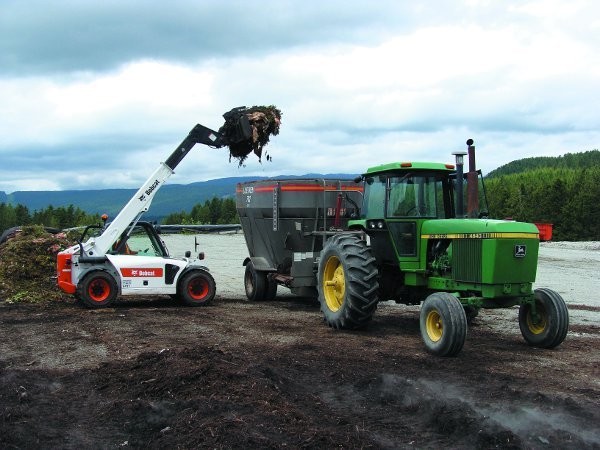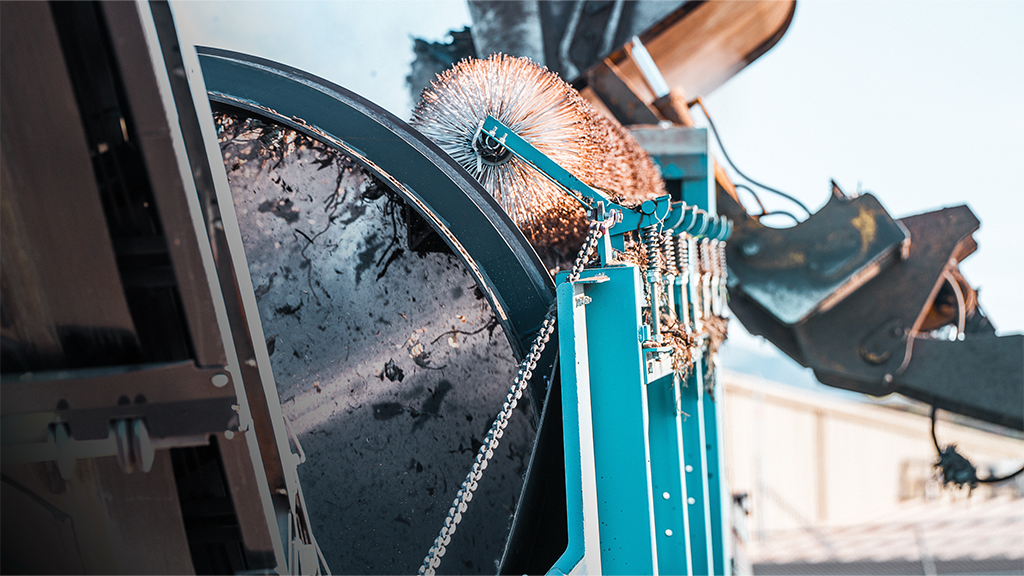
Since becoming interested in compost research in 1985, the founder of Transform Compost Systems, Dr. John Paul, has dedicated his professional life to promoting the health of soil through the use of compost.
“The importance of recycling valuable plant nutrients and organic matter to maintain the health of our soils cannot be overstated,” Paul says. “Food scraps and other recyclable organic waste makes up 30 to 50 percent of what we send to the landfill. Diverting this organic waste from landfills reduces greenhouse gas emissions and can be recycled to build soil organic matter which further ties up carbon in the soil.”
Dr. Paul earned a Ph.D. in soil microbiology and biochemistry from the University of Guelph and founded Transform Compost Systems, based in Abbotsford, British Columbia, in 1998. His intention was to advance the composting industry by providing ideas, support, training, designs and equipment that improve the economics of the composting process, are safe for workers, and minimize the risk of air or water pollution.
According to Paul, the one to eight percent organic matter present in soil is what turns the other 92 to 99 percent of rock bits into a substance that can sustain life.
“We have already lost up to 50 percent of our soil organic matter worldwide,” Paul says. “We have to do what we can to increase it. Using compost is one way to increase our soil organic matter, provide nutrients to grow crops, and maintain healthy populations of microorganisms that provide disease resistance. We need this to grow local healthy foods.”
Since founding Transform Compost Systems, Dr. Paul has initiated several innovative recycling projects while growing an extensive network of industry affiliates. His dedication and efforts have resulted in furthering the industry by improving standards for composting through the design and construction of the latest in composting technology.
“It’s important for the organic waste recycling process to occur in a manner that does not cause water or air pollution,” Paul says. “We also focus on recycling and composting methods that minimize odour concerns for our communities. The ultimate goal is to increase the health of our soil and reduce our dependence on chemical fertilizers and pesticides.”
High visibility, maximum efficiency facility
Among the many successful recycling projects initiated by Paul is an innovative agricultural compost facility currently in operation at Stanhope Dairy. This is a farm located in the Agricultural Land Reserve (ALR) in Central Saanich, Vancouver Island, British Columbia, and its showing tremendous promise for setting new standards in food waste composting. The ALR was established from 1974 to 1976 through cooperative efforts with regional districts and member municipalities to protect B.C.’s valuable agricultural land from loss to urban expansion. The amount of farmland in the ALR totals approximately 4.7 million hectares – both private and public – where farming is encouraged and non-agricultural uses are controlled.
Stanhope Dairy actively farms more than 80 hectares, mostly for growing forage grass. The Stanhope site’s compost facility is situated within close proximity to the much-used Lochside trail, a former railway line that has been diffused and converted into a bike, jogging and walking trail. Designed and constructed in cooperation with Foundation Organics of Central Saanich, the 100-foot-wide by 150-foot-long indoor composting facility can accommodate up to four 10-foot-tall aerated windrows and is capable of processing 10,000 tonnes of compost annually.
Matt Mansell, a representative of Stanhope Dairy Farm, is delighted that local residents have embraced the facility, especially given its location within feet of the highly visible public trail.
“The facility is within feet of a walking, biking and jogging trail so it’s highly visible,” Mansell says. “Talking with people who frequently use the trail, they see what we’re doing as a good thing, especially since there is no noticeable odour. They also feel good because it’s a tangible demonstration of what happens to their food waste, as opposed to seeing a stinky hole or pile of stuff somewhere. If not told this was a composting facility, they would have no idea what was going on inside.”
The first six weeks of composting takes place inside this enclosed, ventilated building which is fabricated with an Airfloor aeration floor system. The system is designed to effectively facilitate curing and biofiltration in a negatively ventilated building environment.
Quadruple odour checkpoints
Inside the Stanhope composting facility, material is moved from one windrow to another, during a six-week composting process, to ensure potential pathogens are killed.
At facilities with similar windrow configurations, Dr. Paul uses a Bobcat V417 telehandler to add a layer of finished compost atop the windrows to provide first-stage odour control. The telehandler is also used to prepare compost blends, build compost windrows and assist with placing covers over constructed windrows.
“The extended reach of the telehandler is important for loading our compost mixer and for building the 10-foot-high composting windrows,” Paul says. “Being able to build high piles is fundamental to optimizing use of indoor space, and adding a layer of finished compost is an important component of odour control. The telehandler is one tool that allows us to do that very easily.”
The Airfloor system, designed by B.C. based Buildworks Systems (www.buildworks.com/airfloor) at Stanhope is totally customizable, allowing users to change the distance between aeration pipes and adjust hole sizing and spacing. The top of the Airfloor system's profile can also be used as a screen to ensure level concrete placement, and as a leachate collection system. Each aerated windrow has one centrifugal blower that provides air as required via time and temperature feedback generated by Reotemp wireless probes. The computerized compost control system’s batch processing capability tracks the compost through the entire process.
“We are able to control the flow of air up through each of the windrows as necessary to facilitate the most effective composting process,” Mansell says. “When the fans are off, any leachate generated from the process then trickles back down and into the air floor pipes themselves. When the fan is turned back on, it forces the leachate to a tank for capture and is then recycled for use as an inoculant for subsequent compost batches.”
Readings taken by the wireless probe system monitors the temperature in each of the windrows. (The British Columbia Ministry of Environment requires that temperatures exceed 55 degrees Celsius for three consecutive days to achieve effective pathogen kill and weed seed reduction.) The system also allows the blowers to automatically turn on when the temperature approaches 70 degrees C in order to maintain the temperatures between 55 to 70 degrees C, which is optimal for the microorganisms.
Mansell explains that anything less than five percent oxygen in a compost pile will start to generate odour. The Airfloor system keeps the oxygen levels at around 12 percent, well above the minimum that is needed to avoid creating noticeable odour. All process air inside the building is drawn out using a stainless steel blower, passing through a biofilter bed of wood chips and compost.
Ammonia in the air, within the confined space of the building, is a concern for odour and for potential corrosion. To help address this, Mansell and Paul specified the composting building at Stanhope Dairy be constructed of fabric and hot dipped galvanized trusses with vertical sides. The fabric material allows for natural light to permeate the structure. The aforementioned steel blower system also serves to facilitate the air exchange inside the building and subsequent removal of moisture; yet another line of defense in the many efforts to control odour.
“We specified aircraft-grade aluminum-spun woven piping for the air flow system,” Mansell says. “It’s light and durable. The system exhausts the air from the building into a biofilter that contains what would be the equivalent of a rubber liner. This traps the condensation that comes out of the air within the liner and prevents it from entering into the native soil. It’s then drained to our dairy manure pond.”
Working in concert, Mansell and Paul experimented with different compost recipes before settling on a mixture of yard waste and organic food waste. Food waste is inherently high in moisture content, a condition that is mediated by the absence of moisture in yard waste. The system then introduces the proper amount of oxygen that allows the microorganisms to produce the heat necessary to facilitate the composting process. According to Mansell, the facility is the first composter in the greater Victoria area with the ability to process a full range of composting materials, including leaf and yard waste, animal manure, and food scraps.
“It works wonderfully,” Mansell says. “We’re just taking nature’s way of doing things and speeding it up. We’re also helping train people in the area about composting and recycling their organic waste. Once they understand it can be done, they really want to pitch in and try it for themselves.”




